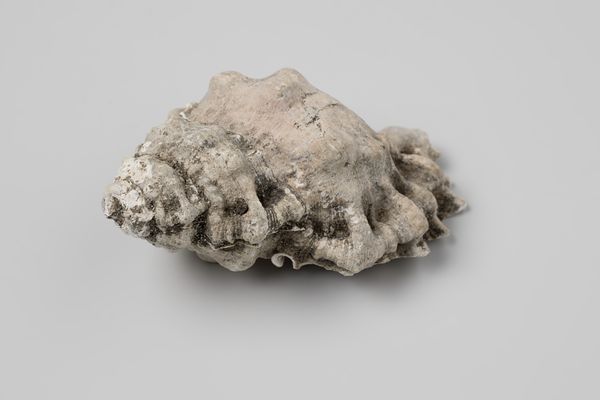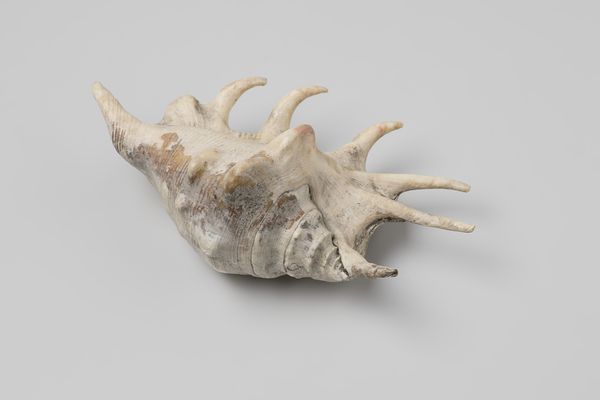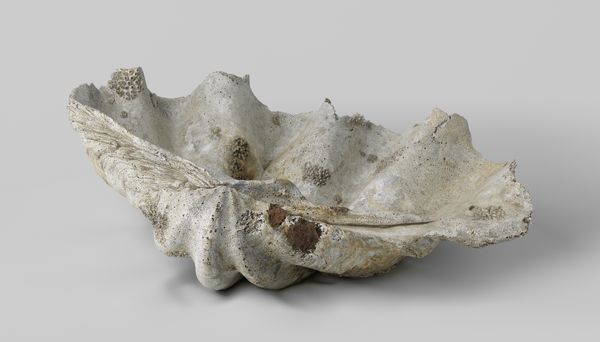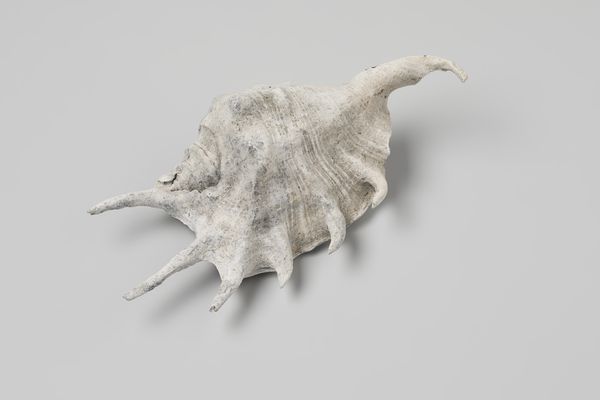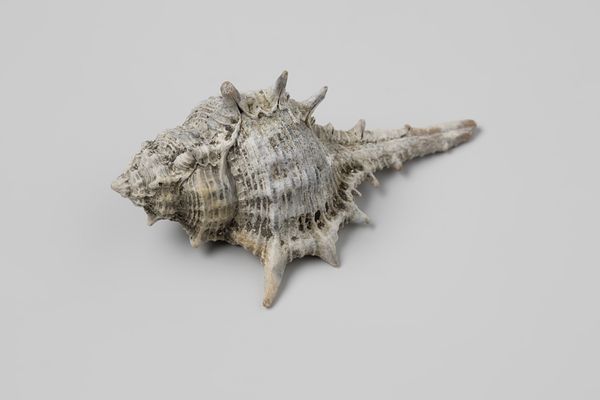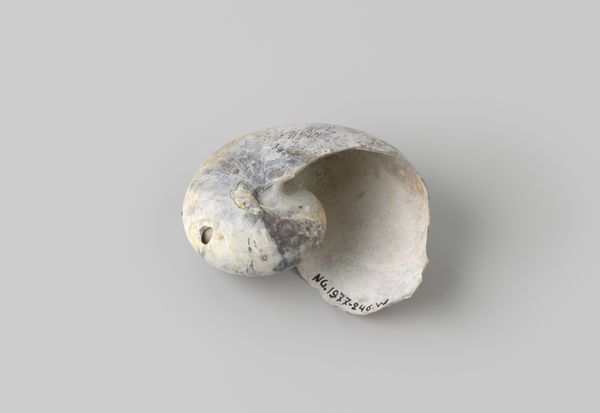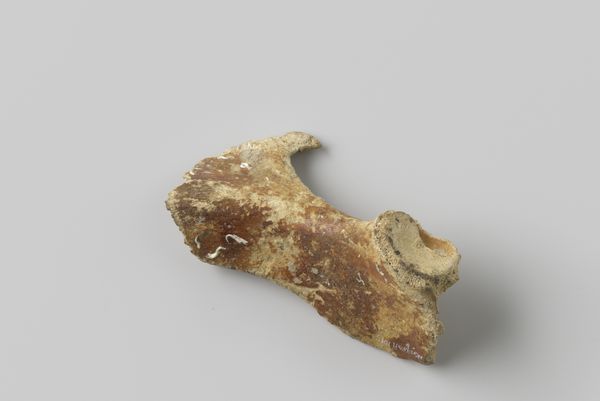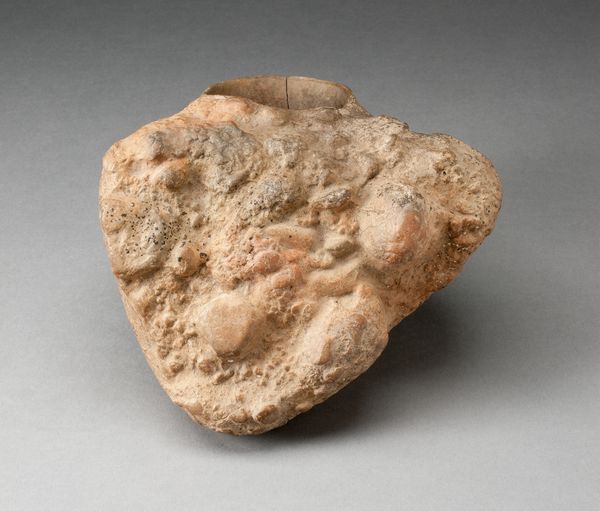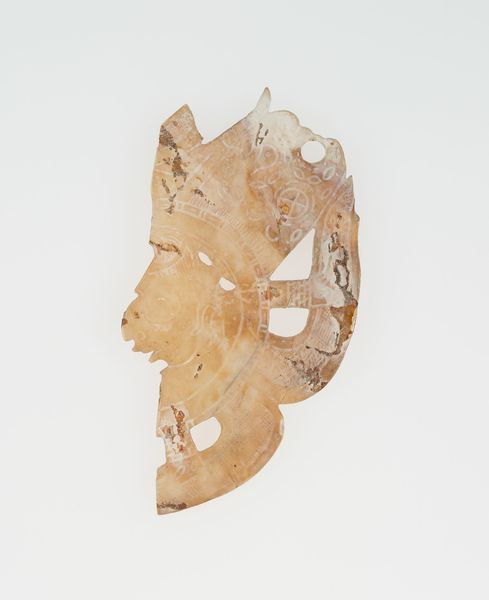
Shell, probably a Bursa rubeta, from the wreck of the Dutch East India ship Witte Leeuw before 1613
0:00
0:00
nietvantoepassing
Rijksmuseum
found-object, sculpture
#
organic
#
baroque
#
found-object
#
sculpture
Dimensions: length 6.0 cm, width 4.0 cm, height 2.4 cm
Copyright: Rijks Museum: Open Domain
Editor: This is "Shell, probably a Bursa rubeta, from the wreck of the Dutch East India ship Witte Leeuw," dating from before 1613. It's on display here at the Rijksmuseum. It's just a shell, but the texture is so compelling. The erosion and the layering create such an intricate pattern. How do you interpret this, especially considering its history? Curator: Structurally, the shell exhibits a fascinating interplay of form and decay. Observe the spiral architecture, its inherent mathematical precision, juxtaposed against the uneven textures resulting from centuries underwater. The Witte Leeuw's tragic demise lends an added dimension. Do you perceive a contrast between the shell's original, intended function and its current state as a relic? Editor: Absolutely. It’s almost a memento mori, reminding us of the passage of time and the ship’s lost treasures. The shell itself has this baroque quality, almost like a sculpture. But how do we move beyond the story to the piece itself? Curator: Consider the shell’s materiality. The calcium carbonate, normally pearlescent and smooth, has undergone significant alteration. The eroded surface reveals a stratified composition, a record of its submersion. The form becomes almost abstract, an exploration of texture and void. What impact does the stark white background have? Editor: It really isolates the shell. It makes you focus on its shape and its details without distraction. I suppose in some ways the emptiness emphasizes what remains after so long at sea. Curator: Precisely. By stripping away context, the stark presentation prompts us to engage with its form, line, and composition—essential artistic qualities independent of narrative. Editor: That's fascinating. So even a found object can be understood through the same lens as a deliberate artwork. Curator: Indeed. This analysis provides insights that would otherwise go unnoticed. I am so glad we had this moment of reflection on natural art.
Comments
No comments
Be the first to comment and join the conversation on the ultimate creative platform.
